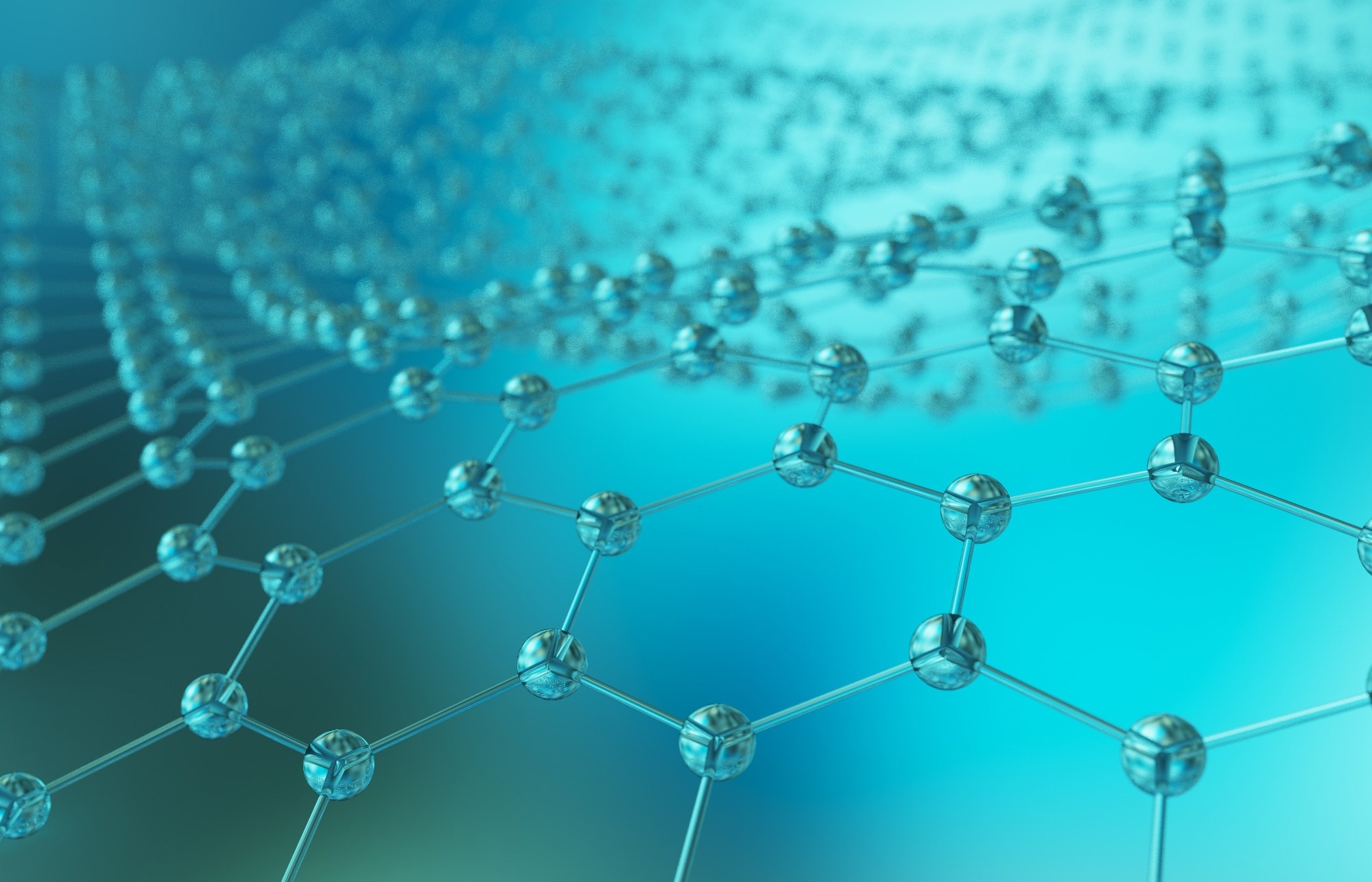New GPU-accelerated modeling reveals the hidden mechanics behind graphene’s AB-BA transitions and the defects that freeze them in place.

Study: Phase-Field Crystal Method for Bilayer Graphene. Image Credit: DRN Studio/Shutterstock.com
Published in Nanomaterials, the new study presents a computational model that tracks the formation and evolution of stacking domains in bilayer graphene, revealing how AB and BA regions shift, stabilize, and become pinned by defects.
By integrating a generalized stacking-fault energy (GSFE) potential into a structural phase-field crystal (PFC) framework, the researchers provide a scalable approach to studying defect dynamics.
Why Stacking Order Matters for Electronic Performance
Stacking order strongly shapes the electronic properties of bilayer graphene, with AB (Bernal) stacking being the most stable configuration.
Atomistic methods can faithfully capture this behavior, but they are often too computationally intensive for large-scale studies.
More conventional continuum models, however, lack the resolution needed to describe stacking energetics and defect formation.
The team's new framework bridges this gap by incorporating a GSFE-derived potential that captures the interaction between the upper graphene layer and a fixed bottom layer.
It allows the model to simulate AB-BA domain boundaries with atomic-level fidelity while maintaining long-timescale efficiency. The predicted boundary widths align with molecular dynamics (MD) simulations and previously published STEM measurements.
Get all the details: Grab your PDF here!
A PFC Model Simulates Bilayer Graphene at Scale
The researchers extended the structural PFC model by adding a bottom-layer interaction potential informed by first-principles GSFE data.
Simulations were initialized either from random phase fields or predefined AB and BA regions, enabling controlled studies of ribbon-like domains and circular stacking inclusions.
The strength of the external potential was calibrated by matching transition widths obtained from MD simulations across multiple boundary orientations.
Fast Fourier transform (FFT) solvers and CUDA-based GPU acceleration delivered performance gains approaching two orders of magnitude over CPU implementations, making large-domain and long-duration simulations practical.
What the Simulations Revealed
In ribbon geometries, AB-BA boundaries formed with thicknesses that varied systematically with orientation, a trend consistent with atomistic modeling.
When circular regions of one stacking order were embedded within the other, they evolved into hexagonal or triangular shapes rather than collapsing directly. These shapes were anchored by localized five to seven carbon-ring defects at their vertices, which pinned the boundaries and stabilized the domains.
When the transition between AB and BA was initialized smoothly, the central domain shrank at a curvature-driven rate, matching theoretical expectations for boundary motion under constant mobility.
This indicates the model’s ability to capture both steady-state structures and slower, diffusive processes typically beyond the reach of atomistic approaches.
Taken together, the results demonstrate how stacking boundaries form, migrate, and become locked in place. These behaviors ultimately influence the mechanical and electronic response of bilayer graphene.
How the Model Could Advance Microstructure Research
The study presents a quantitatively calibrated PFC framework that can simulate AB–BA transitions and associated defect structures with both atomic detail and continuum-scale efficiency.
By matching interface widths to MD benchmarks and leveraging GPU acceleration, the model provides a practical platform for studying microstructural evolution in bilayer graphene.
Though focused on bilayer graphene, this technique has potential relevance for other layered materials where stacking energetics and defect pinning play key roles.
Its combination of atomistic grounding and computational scalability could be valuable in future investigations of microstructure-driven properties in two-dimensional systems.
Journal Reference
Qiao, H., Liu, K. (2025). Phase-Field Crystal Method for Bilayer Graphene. Nanomaterials, 15(22), 1699. DOI:10.3390/nano15221699
Disclaimer: The views expressed here are those of the author expressed in their private capacity and do not necessarily represent the views of AZoM.com Limited T/A AZoNetwork the owner and operator of this website. This disclaimer forms part of the Terms and conditions of use of this website.